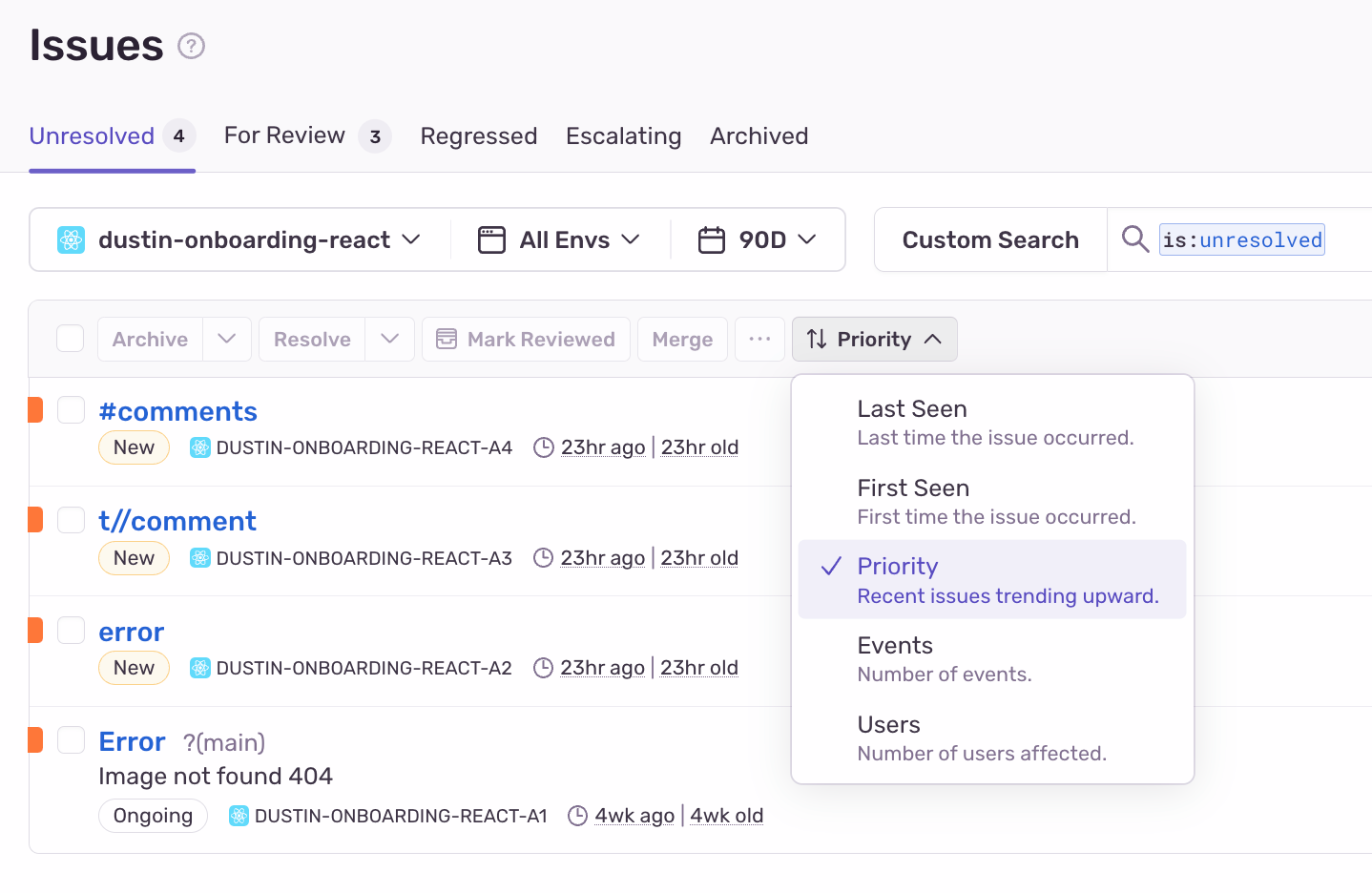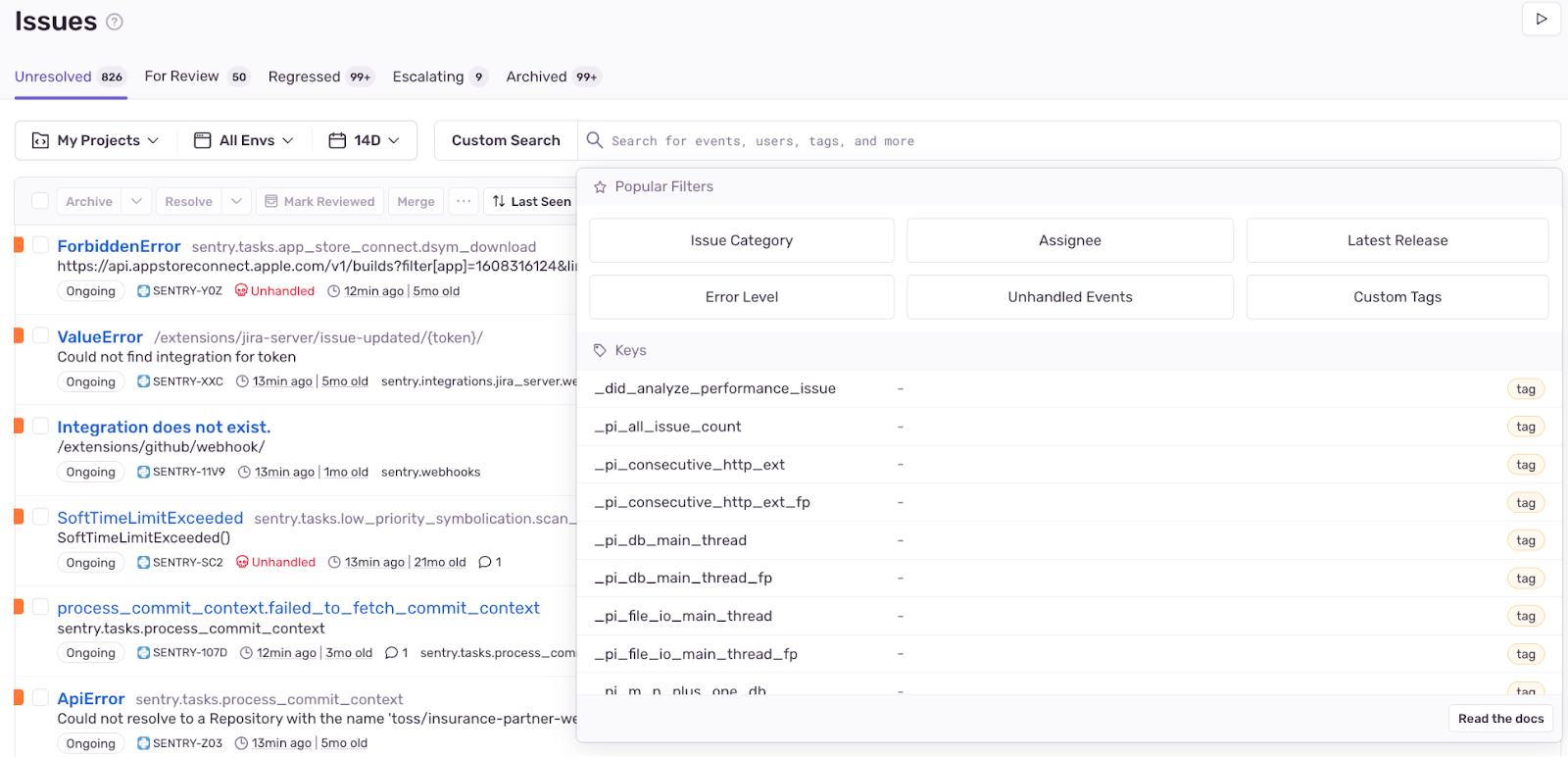Find Trending Problems Faster with Escalating Issues
Find Trending Problems Faster with Escalating Issues
Knowing what issues to hit the snooze button on, or drop everything and push a hotfix for is a common developer dilemma. Similarly to what was discussed in Sleep More; Triage Faster with Sentry, we’ve been collecting and iterating on customer feedback for ways to reduce issue noise and surface high-priority issues faster. That’s why we’ve rolled out new features like Escalating and Ongoing and Archive issue statuses, and updates to Priority sort as part of a larger initiative to more easily/quickly help you pinpoint issues that matter most. In this post we are going to share recent improvements that bring us one (big) step closer to showing what matters most every time you log into Sentry.
Introducing new issue states
Sentry now provides more context into an issue’s life stages - starting as a new issue, to an ongoing known issue, all the way to being resolved or archived. We have added two new tabs - Regressed and Escalating - to easily discover when fixed issues break, and when ongoing or archived issues degrade.
While Regressed was a status before, it only showed when a user had previously Resolved (i.e. fixed) an issue, and that issue continued to receive events. However, we know that this doesn’t account for issues that only get prioritized for fixing when they get worse. This logic prompted us to replace the action and status of Ignore with Archive.
Previously, Ignore was a blunt instrument. It was the easiest way to remove an issue from view, but possibly misses out on the problem worsening, because you had to manually define the threshold for when it becomes unignored. Archiving moves the issue to the Archived tab, and moves it to Escalating when it’s… you guessed it, escalating. Whether an issue was previously archived or never acted on, the new Escalating issue status is assigned when it receives a significantly higher number of events than normal, in addition to other factors. This not only adds an extra touch of organization to your issues feed, but helps you identify high-priority issues faster. Best of all, Escalating issues is based on an algorithm that takes the guesswork out of when a previously low priority issue needs your attention. In beta testing, we found that issues escalated through the algorithm were 3X more likely to get resolved, and less likely to be archived again compared to issues with escalation thresholds manually set.
Improved sort and search
Another tool you can use to pinpoint issues that may require your immediate attention is the Priority sort option on the Issue Stream. We recently upgraded the Priority sort feature to display issues in order based on age, overall event volume, and recent event volume. For example, a new issue that comes in with higher event volume will be prioritized higher on the list than an ongoing issue with lower event volume. Have an opinion on what types of issues we should display first? Join the GitHub Discussion thread.
In the spirit of making it easier to find issues that matter, we also introduced Popular Filters in the issue search bar.
Taking action on issues faster
Finding issues that need your attention fast is core to a good Sentry experience. The improvements mentioned above are just the beginning to making sure every time you log into Sentry, you can easily find issues that are “hot-fix worthy”.
Features mentioned above, like Escalating issue status and improvements to Priority sort, are part of a larger initiative to highlight issues we think need your immediate attention. While we will continue to roll out big and small changes to help you prioritize and act on issues faster, your feedback is invaluable. Please share any questions, comments, concerns or ideas you may have about your Sentry issue experience with us on GitHub Discussions.








